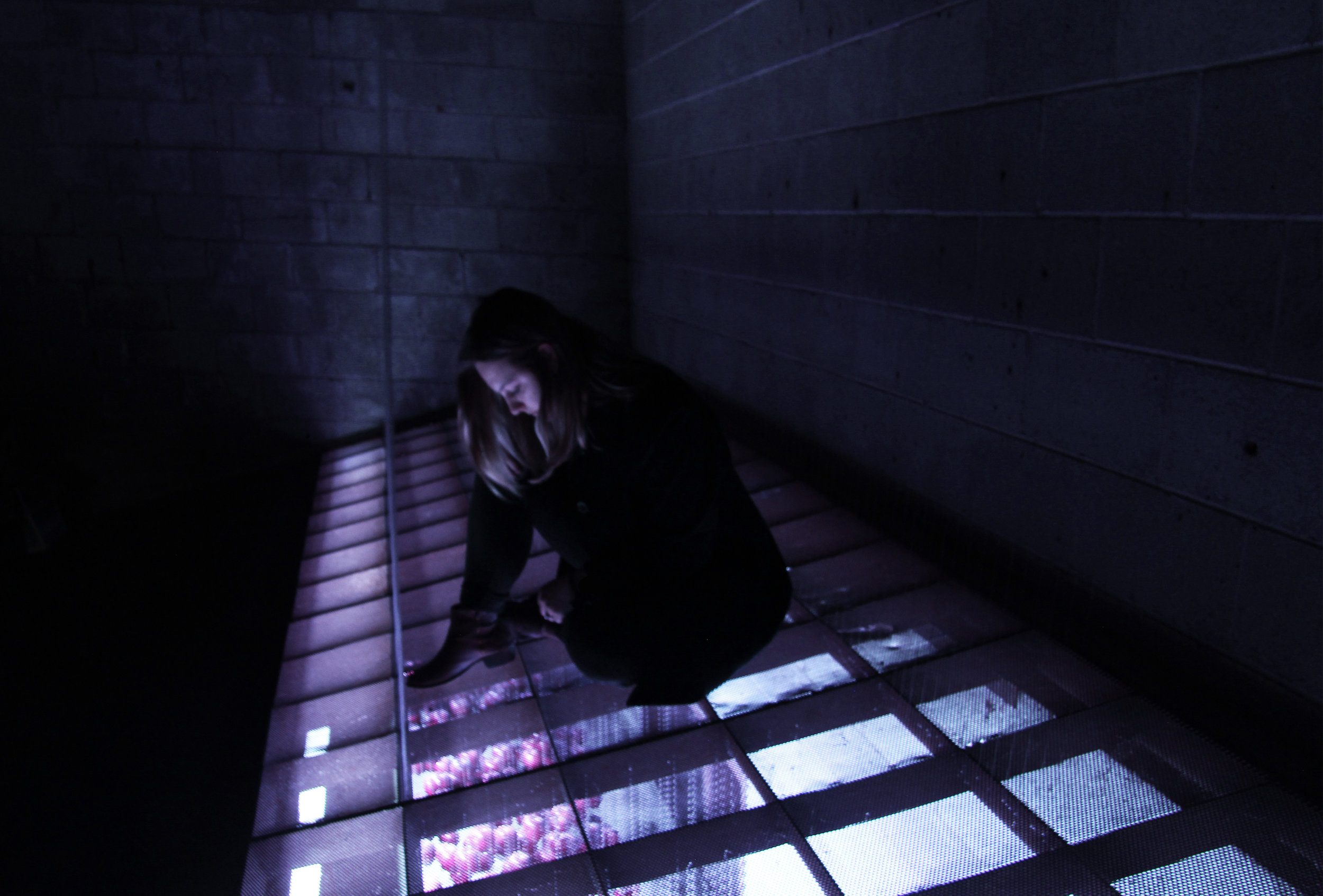
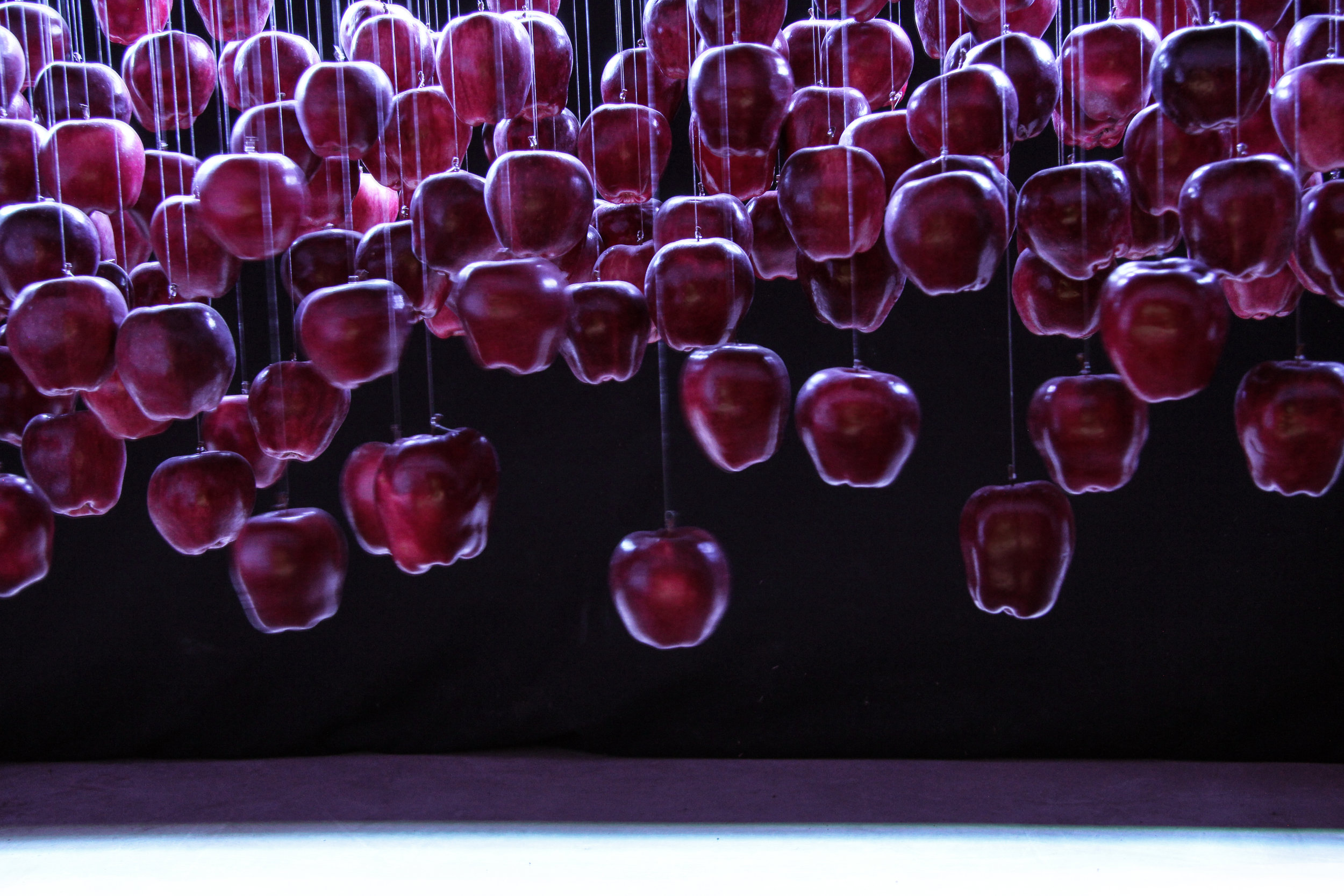
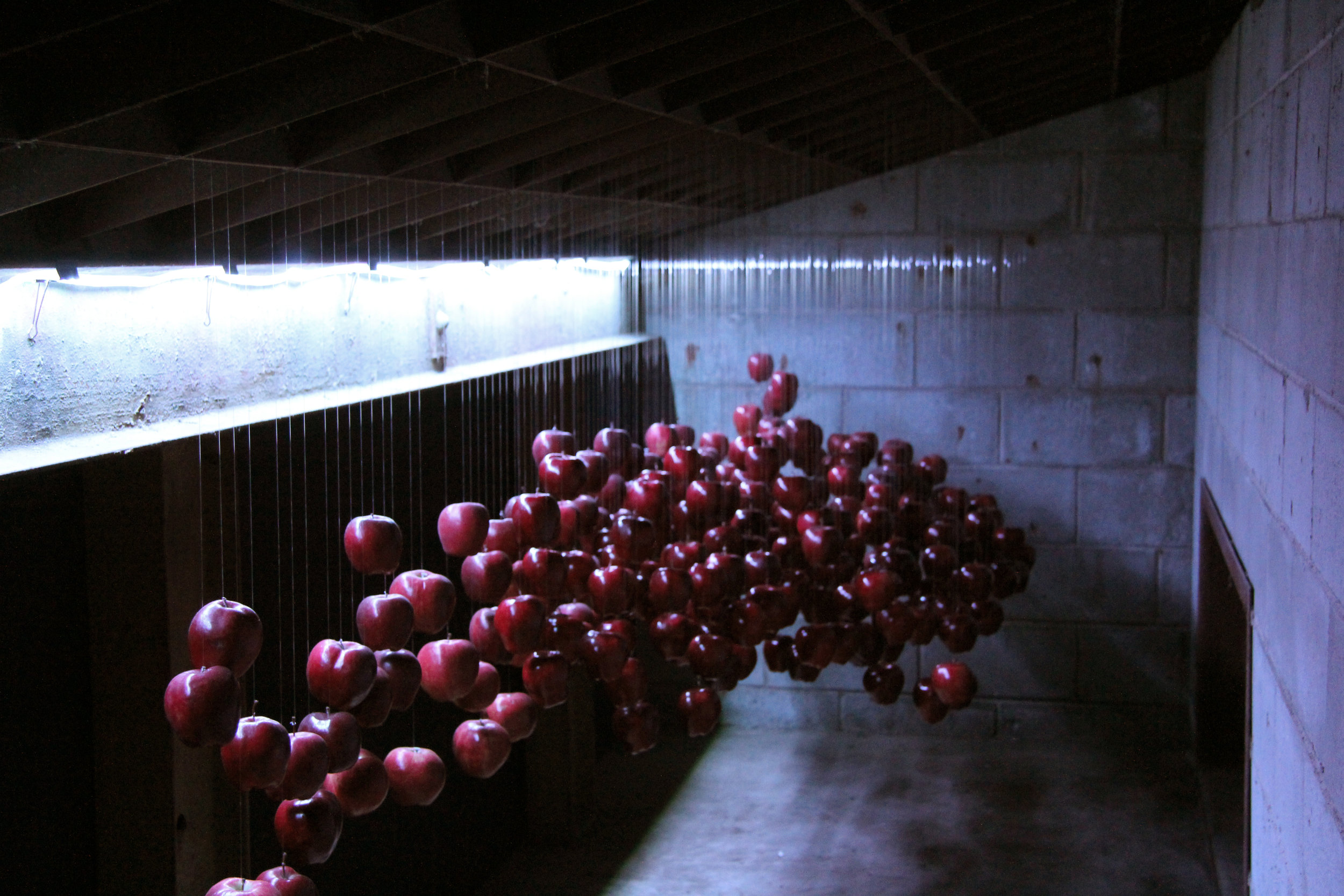
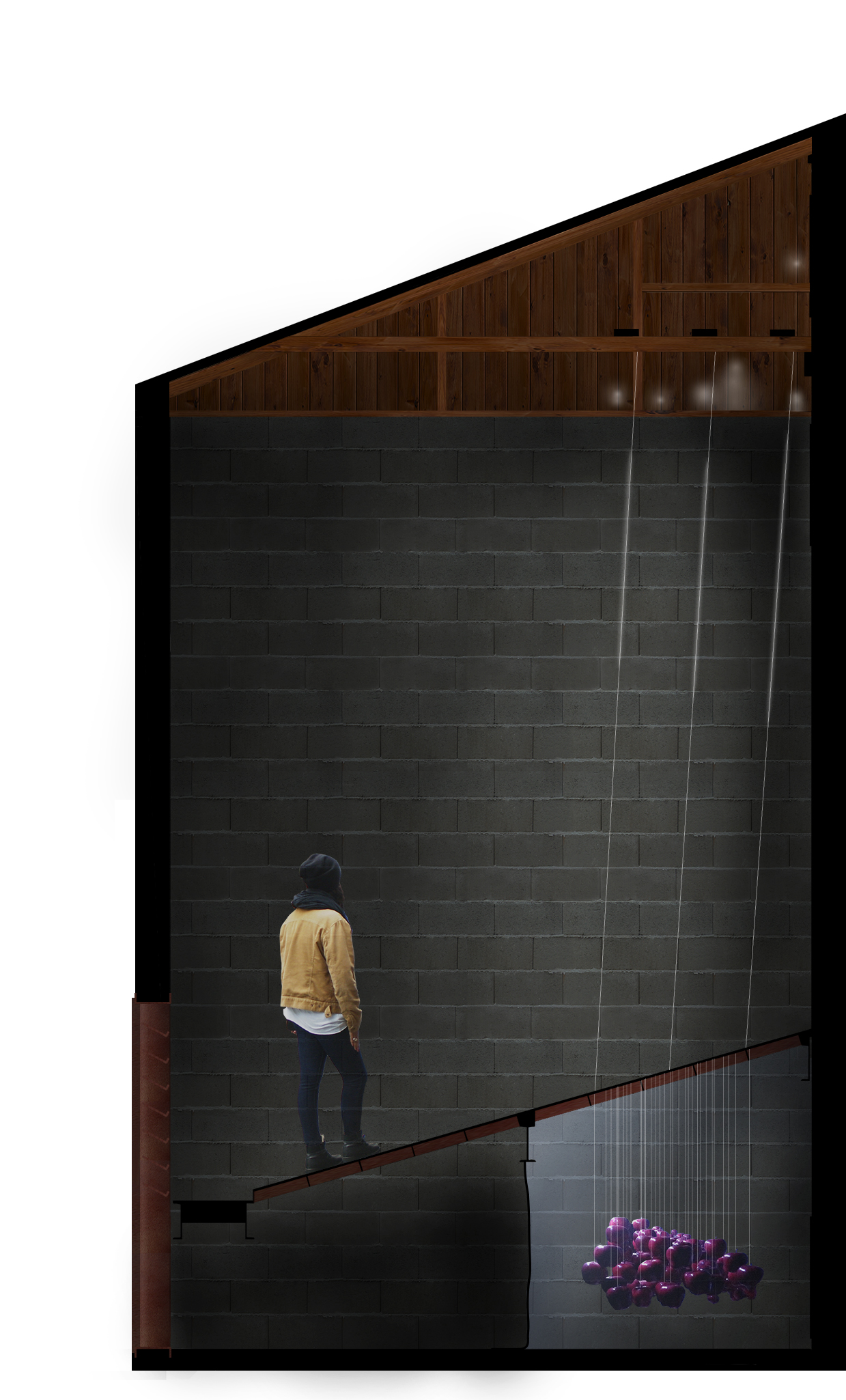
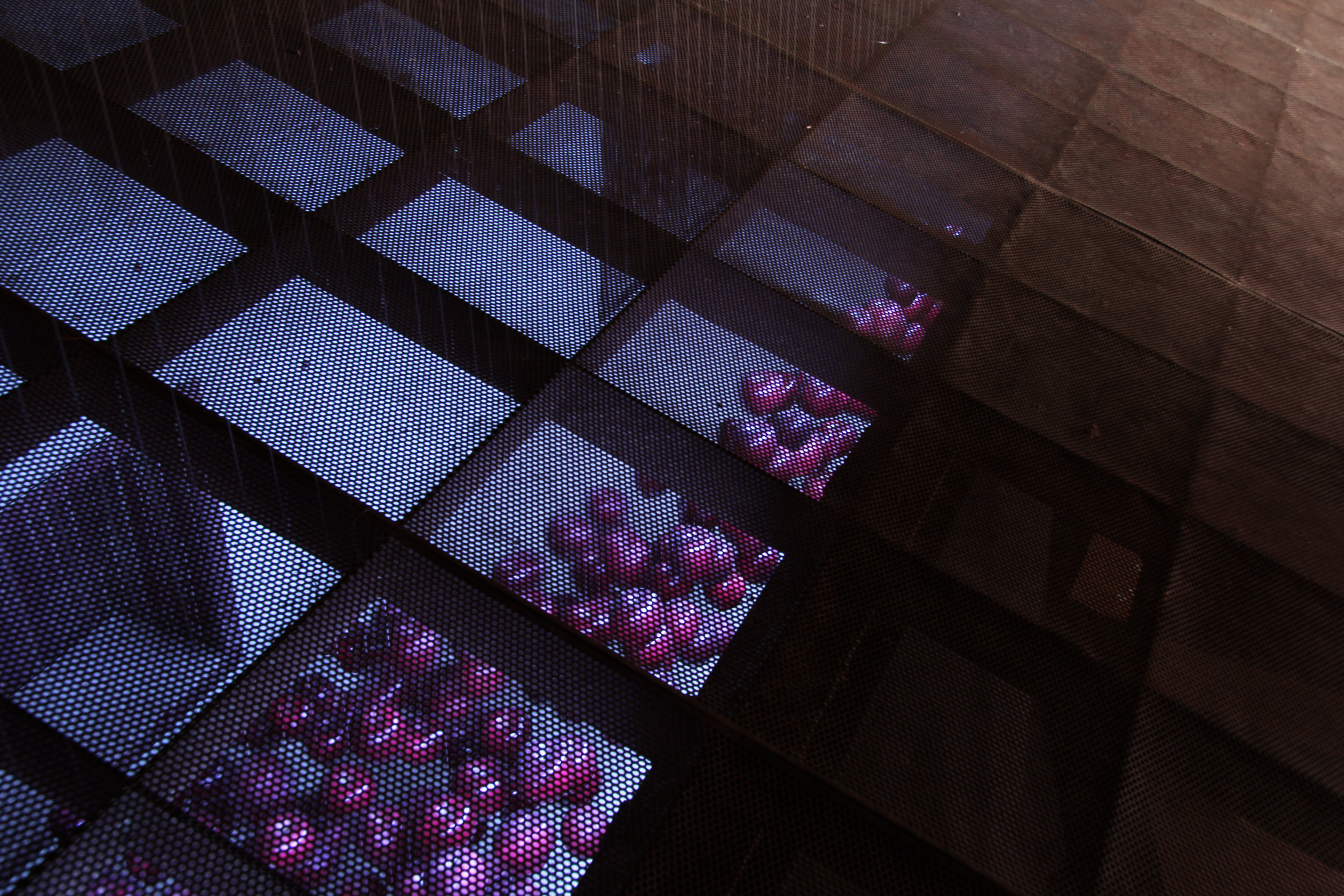
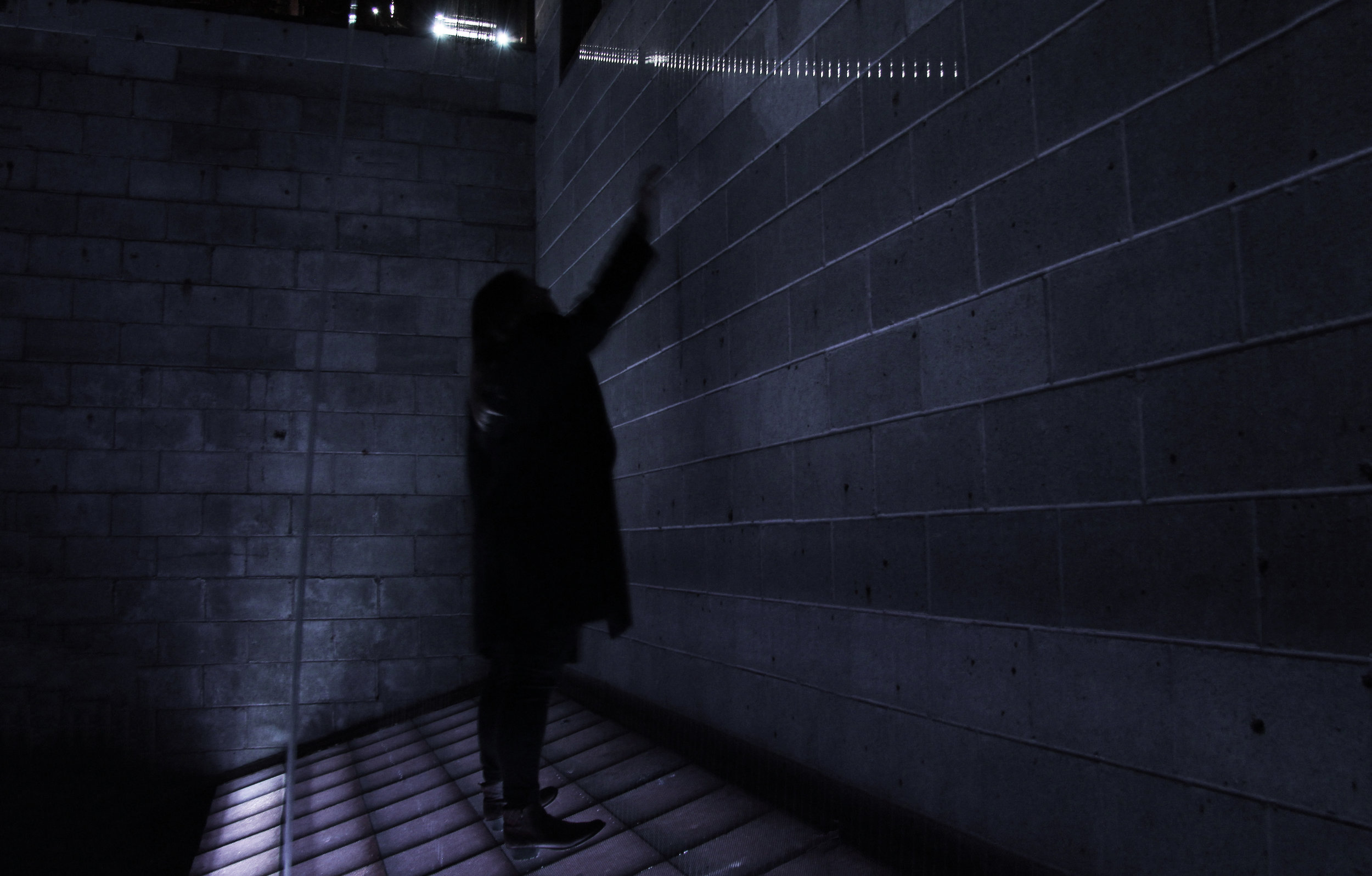

Nicole Becker | Rob Lawrence | Yasong Zhou
“... the way we eat represents our most profound engagement with the natural world. Daily, our eating turns nature into culture, transforming the body of the world into our bodies and minds.”
-Michael Pollan

Farm
Black’s Heritage Farm is a fifth generation farm located south of Ames, Iowa. The farm was once an active seed drying facility integrated into Iowa’s inherited landscape. Inspired by the regional configuration, the reoccupation of the space studies atmospheric logic and the past character of the farm. The specific spatial conditions in which the work is situated offers a site of unprecedented visual and physical experience. When entering, the distinctive spatial qualities allow individual senses to be heightened and perceptions challenged. The study considers the impact of consumerism and the consequences that the demands for food have had on the farm operations in rural Iowa. Human temptation to over consume has caused the industrialization of farming, resulting in the collapse of many small farms. The consumer demands created the need to preserve foods for longer periods of time. Food has become genetically modified to assist in the preservation to fulfill the needs of consumers. This farm’s heritage has left a desire to study spatial phenomenon to represent the understanding of the farm through the act of making.
“We do not learn from experience... we learn from reflecting on experience.”
-John Dewey

Experience
The installation makes a series of experiences conscious through human movement. When one enters, the distinctive spatial qualities cause the senses to be heightened and perceptions challenged. The spectator is influenced to maneuver into the volume by transparent planes capturing and revealing light. The perforated floor, at an upward angle, separates the volume in two, while the vertical planes define another dimension above. One can walk up the unlevel ground towards the back, where different passages created by each plane awaits for the arrival of the human. As one moves further, light illuminating the space below the spectator becomes discovered. Through one’s own movement, one sees, smells, and touches, and therefore embraces their own experience of the space.
“Architecture is the art of reconciliation between ourselves and the world, and this mediation takes place through the senses.”
-Juhani Pallasmaa

Temptation
Upon initial entrance, the apples go unnoticed within the space. The sudden appearance of red takes over one’s ocular sense. The space becomes overwhelming and one grasps their own desire to indulge in the forbidden fruit. Floating below, the apples are unattainable to the human touch due to the separation by the perforated floor, acting as a barrier. This separation drives a temptation to pull the filament seemingly attaching to the apples in attempt to touch the forbidden fruit. The historical connotation of the forbidden fruit traces back to the biblical reference of Adam and Eve in the Garden of Eden, where they are tempted to consume the apple. As a result, the apple became a symbol for knowledge, immortality, temptation, the fall of man and sin. This iconic appearance represents an astonishing number manifest from our daily life. Over time the apple has been continuously modified, naturally and genetically, to appeal to the desire of its consumption as well as fulfilling the needs of the industrialized food industry.
17 “but of the tree of the knowledge of good and evil you shall not eat, for in the day that you eat of it you shall surely die.” Genesis 2:17
“There is charm about forbidden that makes it unspeakably desirable.”
-Mark Twain

Preservation
The bin was originally used as component of the seed drying facility, which retained seeds for later use. The space is repurposed as a natural cold storage to preserve the apples that are carefully suspended below the level of human habitation over a period of three months. The Red Delicious apples occupying the space are genetically modified as well as coated with 1-methylcyclopropene and a thin layer of wax before being placed into cold storage. This is a method used by both small and large scale farms. The temperature of the storage space regulates the length of time the apples can be preserved. The CMU wall acts as a thermal mass to keep the cold temperature in the bin, while the canvas curtain prevents the cooled air from escaping through the entry. These conditions have been maintained over time to create an atmosphere to sustain the preservation efforts. The apples are hung with a clear filament by their stems, emulating the natural process in which they grow. This technique ensures the apple’s body is not in contact with other surfaces that would accelerate its decay.
“Don’t eat anything incapable of rotting.”
-Michael Pollan